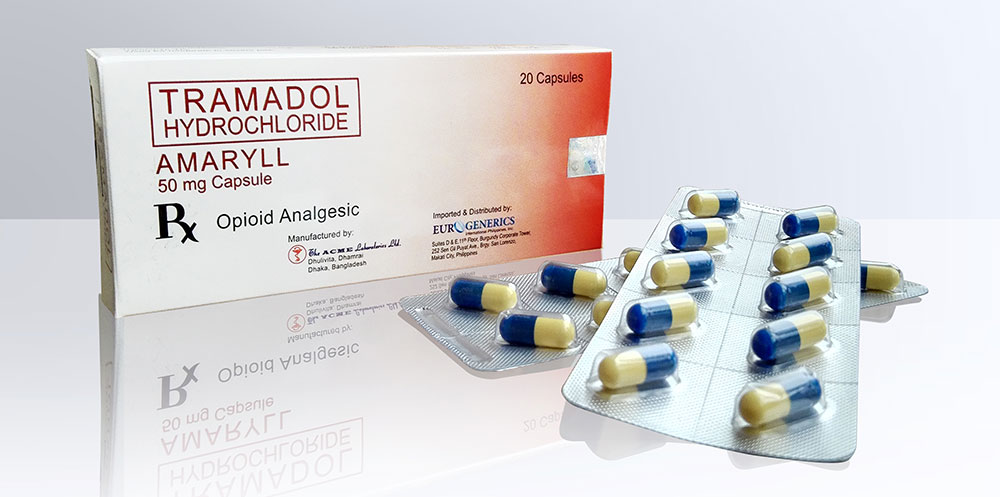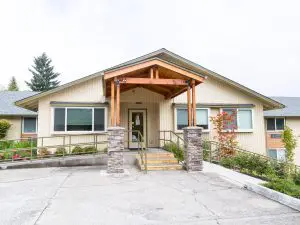Tramadol Addiction Treatment in Washington and Oregon
Written by Thomas Christiansen
& Medically Reviewed by Dr. Deep Shukla, PhD, MS
Medically Reviewed
Up to Date
Last Updated - 6/17/2022
View our editorial policy
Tramadol is an analgesic used to relieve moderate to severe pain. Tramadol produces its analgesic effects by activating opioid receptors in the brain, similar to morphine and other opioids. Tramadol also produces analgesic effects by blocking the reuptake of the monoamine neurotransmitters norepinephrine and serotonin. Although tramadol has low abuse potential, long-term use of tramadol can cause physical dependence and addiction. In such cases, help from medical professionals may be necessary to stop using tramadol. Recovery from tramadol addiction involves detoxification followed by treatment at a rehabilitation center to properly address any issues underlying the addiction.
Tramadol Treatment Options
Since tramadol produces its analgesic effects by activating opioid receptors, protocols used for the treatment of tramadol addiction are often similar to those used for opioids. Thus, treatment for tramadol dependence involves both pharmacological and behavioral approaches.
Pharmacological approaches include opioid replacement therapy that involves the use of pharmacological agents that bind to opioid receptors to alleviate the withdrawal symptoms and reduce cravings. Buprenorphine or methadone may be used during detoxification or even after detoxification to maintain sobriety. These pharmacological approaches are effective in the treatment of tramadol addiction when used in combination with behavioral approaches.
Behavioral approaches may include cognitive-behavioral therapy, motivational enhancement therapy and contingency management.
- Cognitive-behavioral therapy involves teaching individuals to recognize thoughts and actions that lead to tramadol use and teaching them coping skills to overcome triggers that lead to drug use.
- Motivational enhancement therapy involves reducing the individual’s resistance to stopping drug use and increasing their motivation to overcome addiction. This treatment method involves counseling to increase the individual’s awareness regarding their drug use and guiding them to make self-motivated changes to overcome drug use.
- Contingency management is a short-term approach involving the use of rewards in exchange for maintaining sobriety.
Treatment for tramadol addiction may involve detoxification followed by treatment at an inpatient or outpatient rehab depending on the severity of dependence. Aftercare is necessary after completion of rehab to maintain sobriety.
Medical Detox
Abstinence from tramadol results in withdrawal symptoms that are similar to those observed with opioid withdrawal. These typical withdrawal symptoms are generally not life-threatening but are unpleasant, often leading to the resumption of tramadol use. However, in a few cases, the symptoms of tramadol withdrawal are unlike those of opioids (atypical symptoms) and involve paranoia, delusions, anxiety, panic and hallucinations. These symptoms can lead to agitation and aggression.
Treatment at a medical detox facility involves 24-hour medical supervision that can help the individual cope with these adverse withdrawal symptoms. Medical detox may involve opioid replacement therapy to suppress cravings and ameliorate withdrawal symptoms. Benzodiazepines may be used for symptoms of anxiety, agitation and insomnia, whereas drugs like lofexidine or clonidine may be used for hypertension. Besides medications, the tramadol dose may be gradually tapered to reduce the severity of withdrawal symptoms.
Residential Rehab
Treatment at a residential or inpatient rehabilitation center involves round-the-clock care in a drug-free and supportive environment. Residential rehab allows for the intensive treatment required to address the psychological and social issues underlying the tramadol use. Treatment at an inpatient rehab facility involves individual and group counseling, family therapy, participation in social support groups and activities. Treatment for tramadol addiction may also involve maintenance treatment with buprenorphine or methadone. Inpatient rehab also includes medical attention and can provide clients the supervision needed regarding the intake of these medications.
Outpatient Rehab
Outpatient rehab is more flexible and allows the client to return home after treatment and continue with their family life and career. The intensity of treatment provided at an outpatient rehab center can vary. Treatment at a standard outpatient rehab facility often involves a greater emphasis on group counseling over individual counseling. However, treatment at an intensive outpatient treatment center often involves services similar to those provided in inpatient rehab. Individuals with a substance use disorder generally transition to outpatient treatment after completion of an inpatient rehab program. The choice between standard and intensive outpatient rehab may depend on the level of care needed after finishing inpatient treatment.
Dual Diagnosis
Dual diagnosis refers to the co-occurrence of a substance use disorder with a mental health condition. In such cases of co-occurring disorders, drug use may exacerbate mental health problems, whereas mental health disorders may cause the individual to use the drug as a form of self-medication. Effective treatment for dual diagnosis requires the integrated treatment of co-occurring disorders and requires an understanding of how the symptoms of the two disorders interact.
Aftercare
Recovery from substance use disorder requires continuous effort and is a life-long process. Most treatment centers help to plan out the recovery options after completion of rehab and some may also provide follow-up therapy. Aftercare is generally in the form of individual and group counseling at an outpatient facility and participation in social support groups. Aftercare can also involve sober-living communities that provide accommodation in a structured and supportive living environment as individuals return to their daily lives and cope with triggers. Most sober-living communities have strict rules including maintaining sobriety, attending social support groups, performing chores and abiding by curfew hours.
Finding Tramadol Treatment in Washington and Oregon
Finding a tramadol rehabilitation center can be difficult with so many facilities offering similar services. The severity of addiction and the effective treatment methods are determined by the drug use history and social and psychological factors that are specific for each individual. Hence, many rehabilitation centers use treatment protocols that are tailored according to the needs of each individual.
Some things to keep in mind when deciding what program is right for you include:
- Is the treatment program evidence-based?
- Is the facility staffed by experienced medical professionals?
- What is the staff to patient ratio?
- Is the rehabilitation facility covered under my insurance plan?

The Recovery Village Ridgefield
888 Hillhurst Rd. Ridgefield, WA 98642
(877) 379-3021
With both medical detox and residential treatment center easily accessible for residents of Washington State and Oregon, The Recovery Village Ridgefield can help you start the path to recovery. Contact us to speak with a representative about our evidence-based treatment programs. You deserve a healthier future, call today.
Sources
National Institute on Drug Abuse. “Medications to treat Opioid Use Disorder.” June 2018. Accessed September 13, 2019.
Senay, Edward C., Edgar H. Adams, Anne Geller, James A. Inciardi, Alvaro Munoz, Sidney H. Schnoll, George E. Woody, and Theodore J. Cicero. “Physical dependence on Ultram®(tramadol hydrochloride): both opioid-like and atypical withdrawal symptoms occur.” Drug and alcohol dependence. April 2003.
National Institute on Mental Illness. “Dual Diagnosis.” August 2017. Accessed September 13, 2019.
View Sources
National Institute on Drug Abuse. “Medications to treat Opioid Use Disorder.” June 2018. Accessed September 13, 2019.
Senay, Edward C., Edgar H. Adams, Anne Geller, James A. Inciardi, Alvaro Munoz, Sidney H. Schnoll, George E. Woody, and Theodore J. Cicero. “Physical dependence on Ultram®(tramadol hydrochloride): both opioid-like and atypical withdrawal symptoms occur.” Drug and alcohol dependence. April 2003.
National Institute on Mental Illness. “Dual Diagnosis.” August 2017. Accessed September 13, 2019.
Authorship





